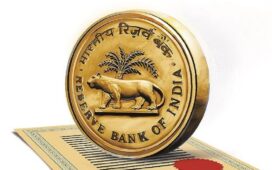Key Takeaways:
- Start with the right training: New riders in Singapore must complete certified lessons and pass practical tests to develop essential road skills and safety habits.
- Choose a beginner-friendly bike: Selecting a manageable, cost-effective motorcycle helps build confidence while keeping running and maintenance costs reasonable.
- Invest in proper safety gear: Quality helmets, gloves, jackets, and other protective items play a vital role in reducing injury risks, even on short commutes.
- Do not overlook insurance protection: A solid insurance plan provides critical financial support in the event of an accident, helping to cover medical bills, repair costs, and third-party liabilities.
Introduction
Riding a motorcycle can be exhilarating, offering the freedom to navigate through traffic with ease and the convenience of two-wheeled travel in a busy city like Singapore. With space at a premium and roads often congested, it’s no wonder more people are turning to motorcycles as a practical alternative.
But the thrill of riding comes with real risks, especially for beginners. From getting the right gear to understanding local road rules, staying financially protected, and being mentally prepared, there’s more to riding a motorcycle than just getting a licence. Here’s what every new rider should know before hitting the road.
What Licence Do You Need to Ride a Motorcycle in Singapore?
If you’re thinking about getting started on two wheels, your first step is securing the proper licence. In Singapore, motorcycle licences come in three classes: 2B, 2A, and 2. New riders typically begin with a Class 2B licence, which allows you to ride bikes with an engine capacity of up to 200cc. With time and experience, you can progress to Class 2A (201 to 400cc) and eventually to Class 2 (above 400cc).
You’ll need to enrol in a certified riding school, such as the Singapore Safety Driving Centre (SSDC) or Bukit Batok Driving Centre (BBDC). These schools offer everything from classroom theory to circuit drills and road riding sessions. Each stage ends with a practical test conducted by the Traffic Police.
These processes are designed to help riders build competence and confidence before sharing the road with other vehicles.
How Do You Choose the Right Bike for Your First Ride?
It’s easy to be drawn to a sleek or powerful model, but for your first bike, practicality should come first. Class 2B motorcycles are generally best for beginners—they offer a good balance of control, comfort, and manageable engine capacity.
When deciding, consider more than just appearance or speed. Look at ongoing costs like maintenance, spare parts, and insurance. Some models are far more affordable to run than others. For daily use, commuter bikes are often a more sensible and economical option compared to performance models built for weekend rides.
Choosing a bike that fits your lifestyle and experience level can make your early riding days safer, smoother, and more enjoyable.
Why the Right Gear Makes All the Difference
Wearing proper gear is not about style. It is about safety. At the very least, you will need a PSB-approved helmet, gloves, a sturdy jacket, long trousers, and riding boots. Even short neighbourhood rides call for full protection.
Additional items, such as rainwear, reflective vests, and joint guards, can improve both comfort and visibility. Given Singapore’s humid and rainy weather, breathable and waterproof materials are especially useful.
Being properly outfitted helps you stay ready for a range of conditions and offers an essential layer of protection when riding a motorcycle.
What Should You Know About Riding on Singapore’s Roads?
Riding in Singapore comes with its own set of challenges. Motorcycles are smaller and often harder for other road users to see, especially in heavy traffic or low light. Staying safe means keeping to your lane, being cautious when overtaking, and always checking your blind spots.
Weather is another key factor. Rain can make road markings, metal covers, and painted surfaces dangerously slippery. It is important to adjust your speed, avoid sudden braking, and exercise extra caution when road conditions change.
Understanding these local risks and adapting your riding habits can help you stay safer on the road.
How Can You Stay Protected Beyond the Helmet?
Wearing the right gear can reduce the risk of injury, but it does not shield you from the financial impact of an accident. Medical bills, repairs, and third-party liabilities can quickly add up. This is why having proper motorcycle accident coverage is so vital.
Riders face higher risks on the road compared to drivers in enclosed vehicles. Even a minor collision can lead to unexpected costs and setbacks. The right insurance plan can cover medical expenses, damage to your bike, and claims from others involved in the accident. It provides the financial support you need to recover without added stress.
What Does Defensive Riding Look Like?
Defensive riding is all about staying alert and assuming that other road users may not see you. This approach enables you to identify potential hazards early and respond promptly to avoid them.
Maintain a safe distance from other vehicles and avoid lingering in blind spots. Remain vigilant of sudden lane changes, abrupt braking, or distracted drivers. When you ride with caution and stay one step ahead, you lower your risk and build confidence every time you get on the road.
Final Thoughts: Be Ready Before You Ride
Riding a motorcycle can be liberating, but it also comes with significant responsibilities. From securing the right licence to choosing a beginner-friendly bike and wearing proper gear, every step plays a part in keeping you safe on the road.
Insurance is just as essential. It helps protect against medical expenses, repairs, and third-party claims that may result from an accident. With riders facing greater vulnerability, the right coverage offers crucial peace of mind.
Income Insurance offers motor plans tailored to the needs of riders in Singapore. If you’re also on four wheels, it may be time to review your car insurance policy to ensure complete protection.
To learn more or enquire about motorcycle insurance, contact Income Insurance today.








